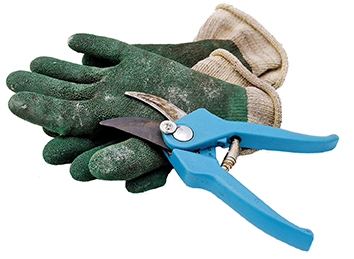Late Season Pruning+Free Workshop
Posted on March 29, 2016 by bob in Yard 'N Garden
If you have not been out in the cold to prune your landscape plants and are wondering if this is even the time to do it, hopefully this information will be of help. Whether or not you should prune now depends on the plant, so be careful — not all plants should be pruned at the same time of year. Pruning at an incorrect time will remove buds that are already in place for next year’s flowers.
Ornamental shrubs and trees, which bloom in late winter and early spring, should not be pruned until after the spring blooming cycle is complete. These plants bloom on “old wood” or growth that occurred in the summer and fall of last year, so pruning them now will remove all of the buds and thus, result in no flowers. Examples of plants that would be considered spring blooming are: Forsythia, Camellia, Spirea, and Azaleas. These should be pruned right after they flower and definitely before June as they will begin to set new buds for next year’s flowers.
If the shrub or tree flowers in late spring, summer or fall, this means it blooms on “new wood” and the buds or flowers have occurred throughout the spring. These plants should be pruned once they go dormant into the winter, before they leaf out the following spring. Examples of these are: Crape myrtle tree, Gardenia, Lilac Chaste –Tree, Butterfly Bush, and Clematis.
The best guideline for pruning is to follow the May Rule. If a plant blooms before May 1 prune it as soon as its flowers are spent. Early spring flowers, before May 1 are produced on last year’s “old wood” growth, and pruning in spring removes the current bloom buds.
If a plant blooms after May 1, prune it when the plant is dormant, in the late fall or winter. Summer flowers produced after May 1 are on “new wood” growth. Pruning stimulates new growth and greater flower production for the following year.
Exceptions to the May Rule: All Hydrangeas (summer bloomers) should be pruned immediately after flowering. During the late fall and winter months is the time to prune these to the ground. Discard all of the dry, spent plant material of ornamental grasses, annuals and perennials. As for bulbs, after spring bulbs stop blooming you can remove the spent flowers, but leave the foliage until it begins to turn brown and die down. The bulbs need this foliage as it is used for growth of the bulbs and to make “food” in the bulbs that will be stored up until next spring.
For more information on types and styles of pruning such as renewal pruning, cane pruning, and tree pruning please visit: www.aces.edu/Tallapoosa/landscape-gardening/Pruning-Outline.htm
Mallory Kelley, is a Master Gardener Regional Extension Agent – Alabama Cooperative Extension System. For more information on becoming a master gardener, visit www.capcitymga.org or email capcitymga@gmail.com.
Capital City Master Gardener Association
Free Lunch & Learn
12:00-1:00 pm | Armory Learning Arts Center
1018 Madison Avenue, Montgomery
Bring a sack lunch (drinks provided)
April 6: Growing Tomatoes– Mallory Kelley, ACES
May 4: Bloom Times, Year Round Color– Terese Goodson, Master Gardener
Call (334) 270-4133 for more information.









